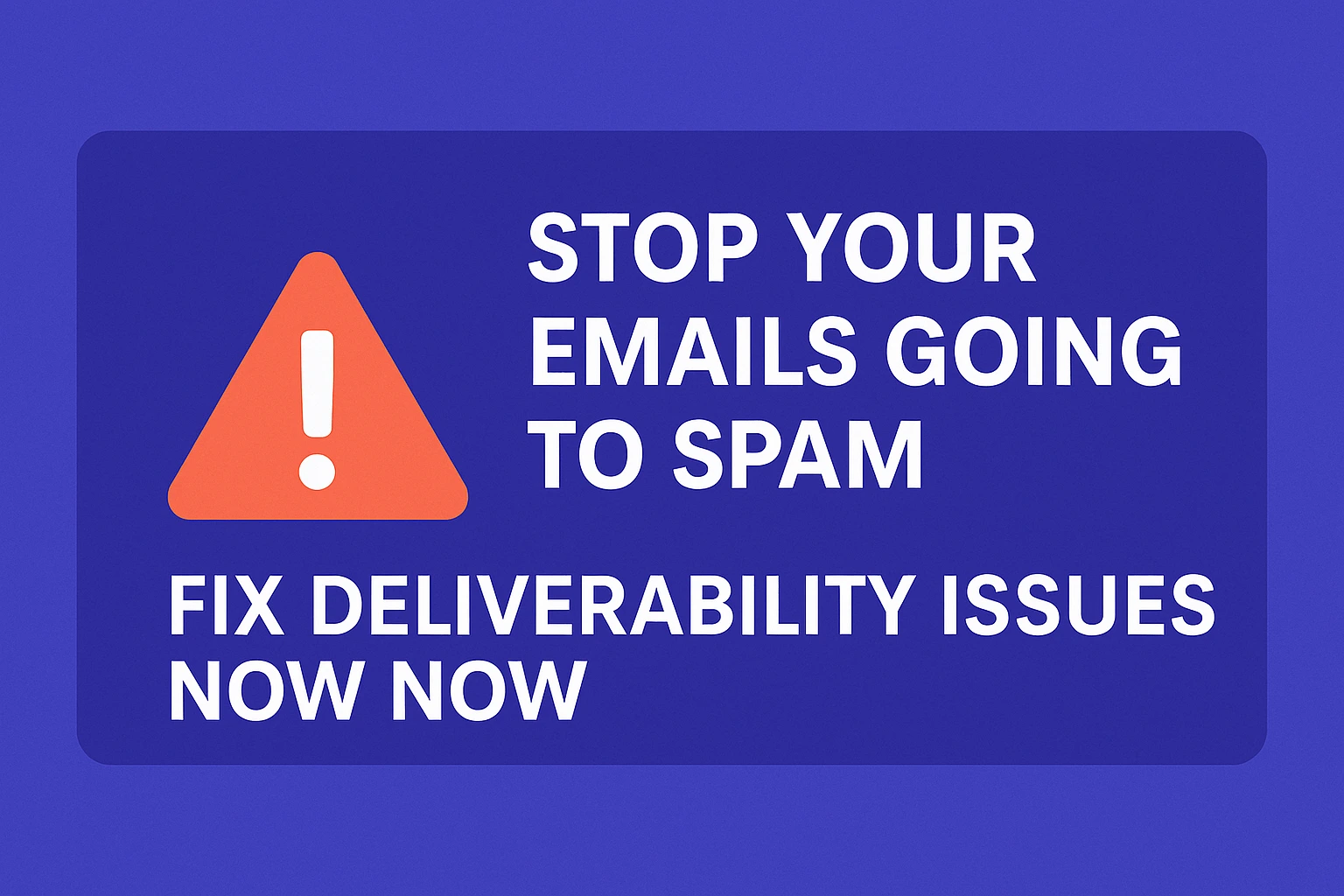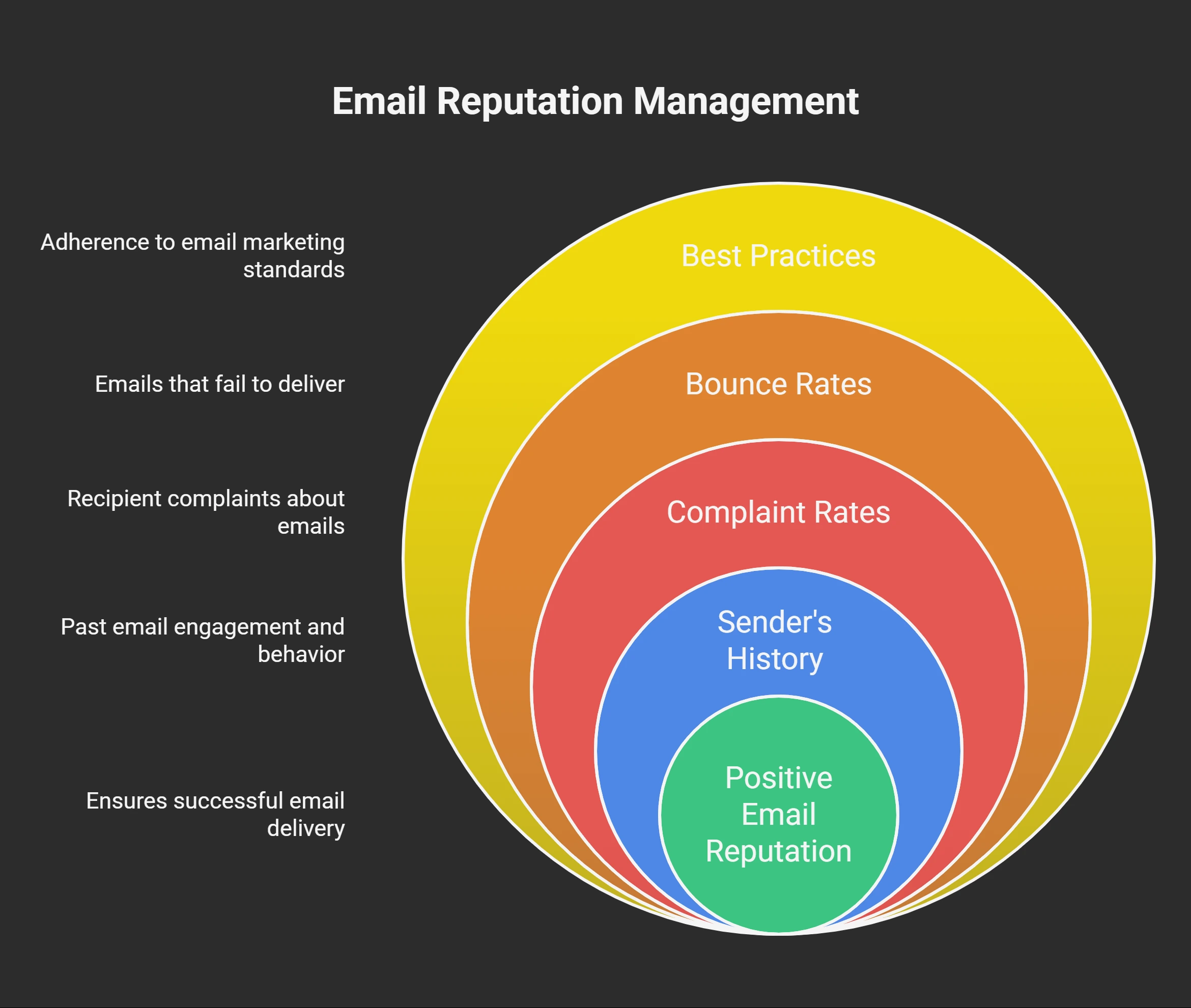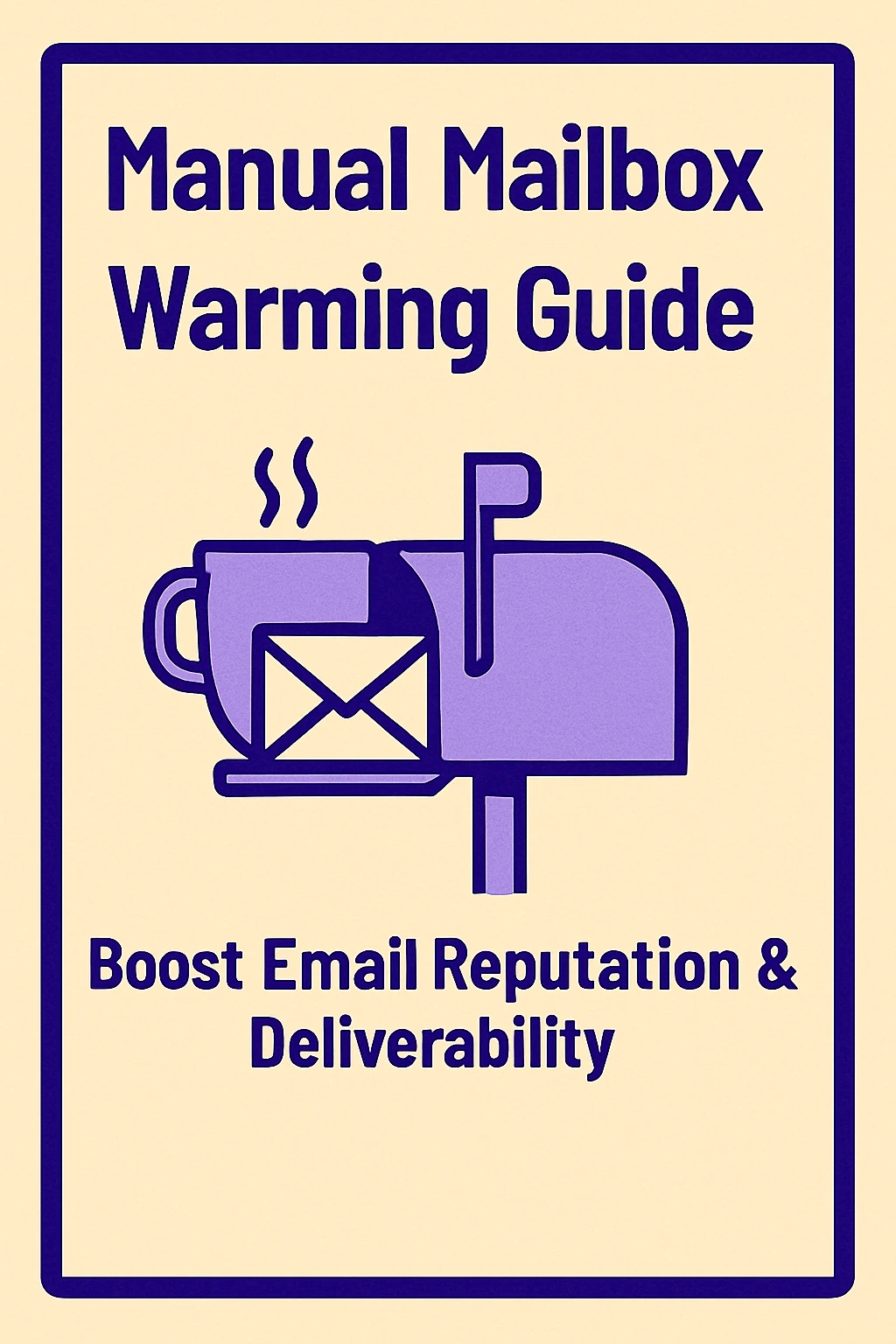Stop Your Emails Going to Spam: Fix Deliverability Issues Now
Email deliverability is one of the most critical yet overlooked aspects of digital marketing. This comprehensive guide addresses the frustrating reality that many business owners face: their carefully crafted emails are landing in spam folders instead of reaching their intended audience. The post begins by acknowledging the emotional and financial impact of poor email deliverability, using a relatable personal story of email open rates plummeting from 40% to 5%. The article promises practical, actionable solutions based on real-world experience rather than theoretical advice. It's designed for business owners, marketers, and entrepreneurs who are struggling with declining email performance and need immediate, effective strategies to restore their email deliverability. The tone is empathetic and solution-focused, recognizing that email marketing challenges can threaten business survival. Readers can expect to learn the exact steps and techniques that successfully restored email deliverability in a real business scenario. The guide aims to transform email marketing from a source of frustration into a reliable channel for customer communication and sales generation. This is essential reading for anyone whose business depends on email marketing but is currently experiencing poor inbox placement rates.

Your emails are going to spam. Again. You write amazing content. You hit send. Then nothing happens. Your open rates are terrible. Your sales are down. Your customers think you disappeared. I know exactly how you feel. This happened to me too. Last year, my email open rates dropped from 40% to 5%. My business almost failed because nobody saw my emails. But I fixed it. And so can you. Here's exactly what I did to get my emails back in the inbox.
What is Email Reputation?

Think of email reputation like your credit score. But for emails. Every time you send an email, Gmail and Outlook watch you. They keep score based on how people react to your messages.
If people like your emails, your score goes up. If they hate them, your score goes down. A good score means your emails reach the inbox. A bad score means they go to spam.
Most people don't know this system exists. That's why their email marketing suddenly stops working. They wonder why their open rates crashed overnight. The answer is usually a damaged sender reputation.
Why Your Emails Go to Spam
Here's the truth: it's probably not your fault. Email providers changed their rules. They got stricter. Much stricter than they used to be.
Now they use robots to decide if your emails are good or bad. These robots look at everything - how many people open your emails, how many people delete them, how many mark them as spam, and how often your emails bounce.
If the robots don't like what they see, goodbye inbox. Your emails disappear into spam folders where nobody will ever find them.
The Real Problems Killing Your Emails
Let me save you some time. These are the biggest problems that destroy email deliverability. Most business owners make these mistakes without realizing it.
Your email list is messy. Old emails, fake signups, people who forgot about you. Each bad email hurts your score. People don't want your emails. If even 1 person out of 1000 marks you as spam, you're in trouble.
You send emails randomly. 50 emails Monday, 500 Tuesday, nothing Wednesday. The robots hate this inconsistency. Your email setup is broken. Missing important settings that prove you're not a spammer.
Nobody opens your emails. Low opens tell the robots your emails are unwanted. You're on a blacklist. Sometimes it's your fault. Sometimes you just got unlucky.
How I Fixed My Email Reputation (Real Story)
This isn't theory. This is what actually worked for me. I'm going to share my exact process, week by week. You can follow the same steps to fix your own reputation.
The whole process took me about 6 weeks. Some weeks were harder than others. But by the end, my open rates went from 5% to over 30%. My business started growing again.
Week 1: I Fixed the Technical Stuff
I started with the boring technical things. But they're important. Without these set up correctly, you'll never get out of spam folders.
You need three things set up properly. SPF Record tells email companies which computers can send emails for you. DKIM adds a secret signature to prove your emails are real. DMARC tells email companies what to do with suspicious emails.
Sounds complicated? It's not. Most email companies will set these up for you. I used MailKarma.ai to check if everything was working. It was free and easy to use.
Week 2: I Cleaned My Email List
This was painful but necessary. I had to remove subscribers from my list. It felt wrong, but it was the right thing to do.
I had 5,000 people on my email list. Sounds great, right? Wrong. 1,500 of them never opened my emails. 200 had bounced. 50 looked fake. I deleted 1,750 subscribers. Yes, it hurt to see my list shrink.
But my email opens went from 12% to 35% immediately. Quality beats quantity every time. Here's what I removed - emails that bounced back, people who never opened anything in 6 months, obvious fake emails like test@test.com, and work emails like info@ or support@.
Use a service like NeverBounce to help with this. It's worth the money. They'll scan your list and tell you which emails are bad.
Week 3: I Created a Sending Schedule
I was sending emails randomly. No wonder the robots were confused. They like predictable patterns. Consistency is key to building trust.
I created a simple schedule. Monday: 100 emails. Wednesday: 100 emails. Friday: 100 emails. Same amount. Same days. Every week. This showed the email systems I was reliable.
I also stopped sending to everyone at once. Instead, I sent to my best subscribers first. The ones who always opened and clicked. Then I sent to the rest. This made my early numbers look good. The robots noticed this positive engagement.
Week 4: I Made My Emails Better
My subject lines were boring. "Monthly Newsletter" and "Company Update." No wonder people ignored them. I needed to make people curious about what was inside.
I changed to curious subjects like "The mistake that cost me $5,000," "Why I almost quit my business," and "3 things I wish I knew sooner." These made people want to open my emails.
I also stopped trying to sell something in every email. Instead, I shared stories. I gave tips. I showed behind-the-scenes stuff. People started replying. They forwarded emails to friends. They actually looked forward to my emails.
Week 5: I Watched My Numbers
I checked my email reputation every Monday. This became part of my weekly routine. You can't fix what you don't measure.
I used free tools like Google Postmaster Tools. I watched for any problems. If my score dropped, I investigated right away. What went wrong? Bad email? List problem? Technical issue? Quick action prevents major damage.
I also checked if I was on any blacklists. Being on a blacklist kills your reputation instantly. I used MXToolbox for this. It's free and easy to use.
Tools That Actually Help
These are the tools I used to fix my reputation. Some are free, some cost money. Start with the free ones first.
MailKarma.ai tracks everything. Your reputation, blacklists, technical setup. Not free but worth it if you're serious about email marketing. Google Postmaster Tools is free and shows how Gmail sees your emails. This is a must-have tool for anyone sending emails.
NeverBounce cleans your email list. It removes bad emails before they hurt you. SenderScore.org gives you a free reputation check. Simple but reliable. MXToolbox checks if you're on blacklists. The free version covers the main ones.
Mistakes That Will Ruin Everything
These mistakes will destroy your progress. I've seen people make these errors and lose months of work. Learn from their failures.
Don't buy email lists. Ever. They're full of spam traps and people who hate unsolicited emails. Don't ignore unsubscribes. When someone wants off your list, remove them immediately. Angry subscribers become spam complaints.
Don't send from a new domain without warming up. Start small. Build trust slowly. Don't use spam words. Avoid "FREE," "URGENT," "ACT NOW" in subject lines. These trigger spam filters.
Don't send inconsistently. Pick a schedule and stick to it. Don't skip double opt-in. Make people confirm they want your emails. It reduces signups but eliminates problems.
When to Start Over
Sometimes the damage is too bad to fix. This is the nuclear option. Only consider this if you've tried everything else.
Signs you might need a fresh start include your reputation score being under 30, being blacklisted everywhere, less than 50% of your emails getting delivered, and months passing with no improvement.
If you start over, learn from your mistakes. Use a new domain. Warm it up properly. Build your list the right way. Don't repeat the same errors that got you in trouble.
My Recovery Timeline
Here's exactly what happened to my reputation. I tracked it every week. This gives you realistic expectations for your own recovery.
Week 1: Score went from 35 to 42. Week 2: Up to 48. Week 3: Jumped to 65 (finally safe). Week 4: Hit 73. Week 5: Reached 79. Week 6: Stabilized at 82.
My open rates followed the same pattern. Started at 5%, now consistently above 30%. The key was doing everything consistently. No shortcuts. No tricks. Just following the rules every day.
What to Do Right Now
Don't wait. Start fixing your reputation today. The longer you wait, the worse it gets. Here's your action plan.
Today, check your reputation score at SenderScore.org. Set up Google Postmaster Tools. Look at your recent email stats. These free tools will show you where you stand.
This week, make sure your SPF, DKIM, and DMARC are set up. Remove obvious bad emails from your list. Create a consistent sending schedule. These technical fixes are the foundation of good deliverability.
Next week, set up double opt-in for new subscribers. Check if you're on any blacklists. Plan better email content that people actually want to read.
Every month, clean your email list. Check your reputation score. Focus on engagement over list size. Monthly maintenance prevents major problems.
Why This Matters for Your Business
Email marketing still works. It's the best way to reach your customers directly. But only if your emails actually reach them.
If your emails go to spam, everything else fails. Your product launches flop. Your sales drop. Your customers forget about you. I learned this the hard way. My business almost failed because I ignored my email reputation.
Don't make the same mistake. Start fixing your reputation today. The sooner you start, the sooner you'll see results. Your future customers are waiting to hear from you.
Need help tracking your reputation? MailKarma.ai makes it simple. Check your score and get alerts when something goes wrong.
The Bottom Line
Your email reputation is everything in 2025. It determines whether your business succeeds or fails with email marketing.
Good reputation equals inbox placement equals more sales. Bad reputation equals spam folder equals business failure. The choice is yours.
Start monitoring your reputation today. Clean your list. Fix your technical setup. Make better content. Your future self will thank you. And your bank account will too.
FAQs
How long does it take to fix a bad reputation?
Depends on how bad it is. Minor issues take 2-4 weeks. Major problems can take 2-3 months. My recovery took six weeks.
Should I use a new domain if mine is damaged?
Only if you're completely blacklisted everywhere. Usually better to fix your current domain. Starting over means rebuilding trust from zero.
What's a good sender score?
80+ is excellent. 70-79 is acceptable. Under 70 means you're having delivery problems. Under 60 is serious trouble.
Can I send cold emails without hurting my reputation?
Yes, but use a separate domain for cold outreach. Warm it up first. Follow all the rules. Never mix cold emails with your main domain.
How often should I clean my email list?
Monthly for active lists. Remove hard bounces immediately after every campaign. Do a deep clean quarterly.
Recent Blogs
FAQs: Everything You’re Wondering About Cold Email Deliverability & MailKarma’s Infrastructure
MailKarma is a dedicated email infrastructure solution built exclusively for cold email outreach. Unlike shared inbox tools or general ESPs, MailKarma gives you complete control over your sending setup—private US IPs, clean domains, and expert-backed deliverability practices. Built by cold email pros, MailKarma is optimized to scale outreach without landing in spam.
Because MailKarma sets up private infrastructure—including custom domains and mailboxes—it doesn’t offer a traditional free trial. However, you can explore the platform, view your dashboard, and test features before provisioning infrastructure. Our private dedicated email servers cost $150 per server plus $0.001 per email sent, making it extremely cost-effective for high-volume cold email campaigns. For Gmail Workspace solutions, pricing starts at $3.50 per email with a 10-email minimum, dropping to $2.50 per email for volumes over 100 emails. This transparent pricing model ensures you only pay for what you use while maintaining enterprise-grade email deliverability.
Yes. MailKarma automatically sets up SPF, DKIM, and DMARC records using best-in-class standards. No technical hassle—our system handles everything behind the scenes, and our support team is always ready to assist if needed.
Every MailKarma subscription includes:
- Automated DNS setup (SPF, DKIM, DMARC)
- Private mailbox hosting
- Ongoing deliverability optimization
- Server monitoring and uptime guarantees
It depends on your monthly sending volume and the number of contacts per sequence. To simplify this, MailKarma includes a volume-based calculator inside the app to help you choose the optimal setup for scale, safety, and inbox placement.
Gmail and Outlook aren't built for cold outreach—they throttle volume, rotate IPs, and limit deliverability. MailKarma gives you:
- Dedicated infrastructure
- Warmed IPs and aged domains
- No shared resources
- Built-in best practices for cold outreach
It's the infrastructure your outreach actually needs.

.png)



